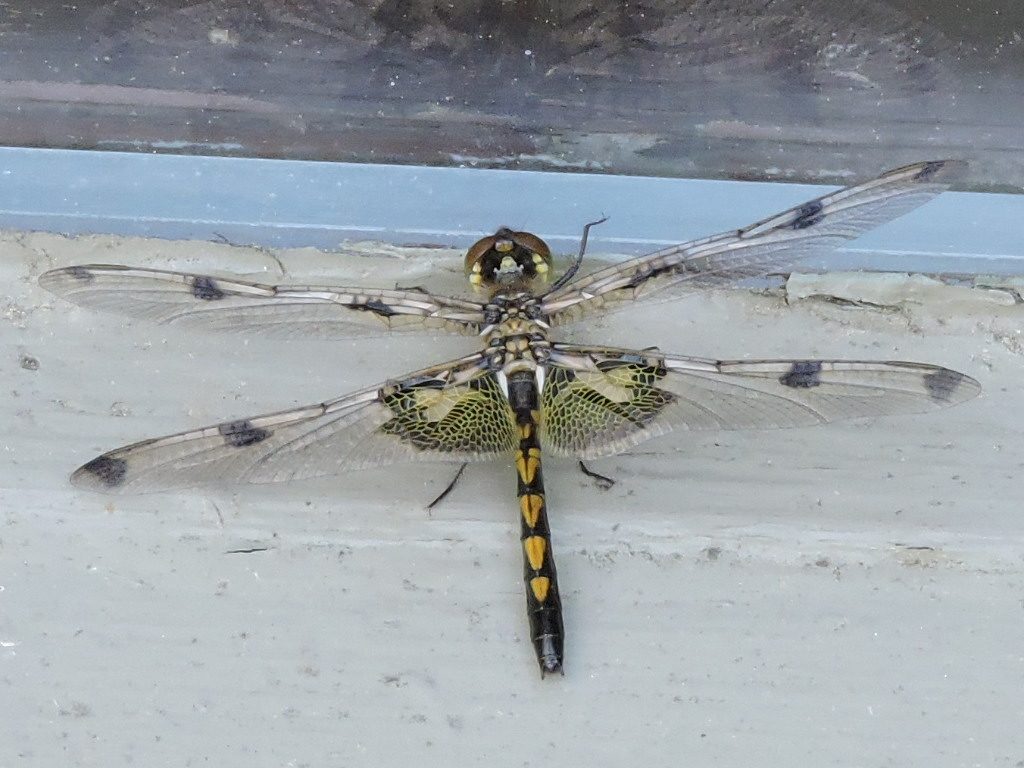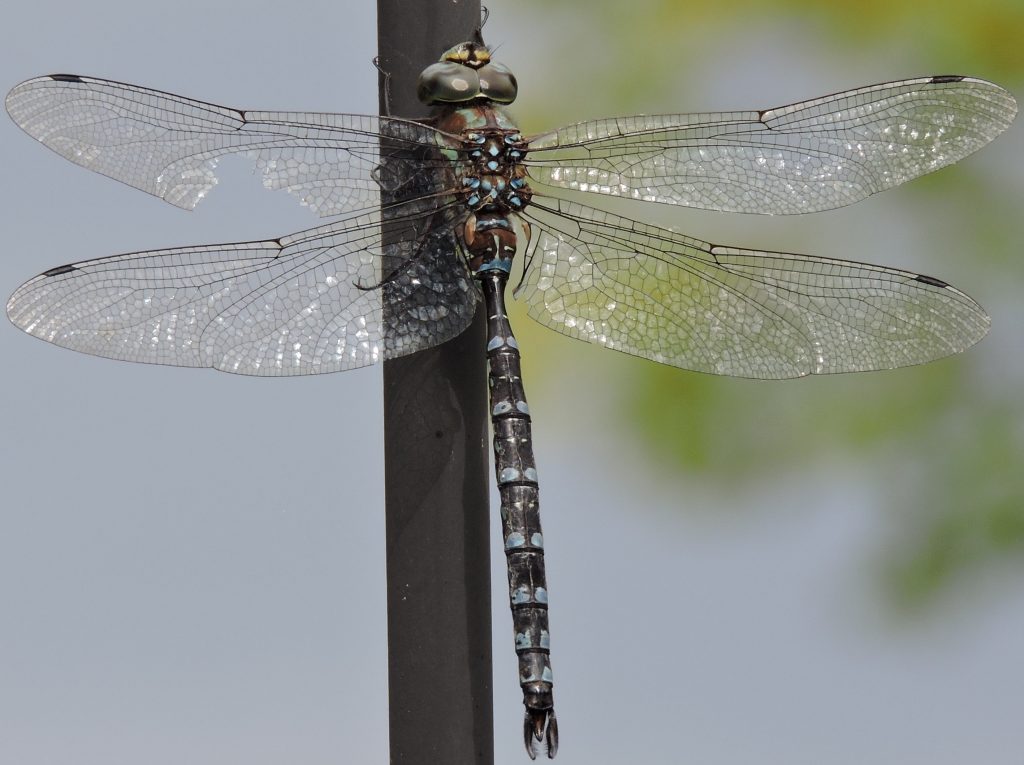
When kayaking, canoeing, working in the yard or hiking at the cottage, we often find ourselves surrounded by swarms of insects. In such instances we delight in the presence of one group of insects, the adult stage of dragonflies and damselflies, known together in scientific circles as the order Odonata.
They fly about catching and devouring other flying insects, including those sucking and biting ones intent on feeding on our blood. While cheering on these predators as they consume large numbers of annoying insects we often ask ourselves what it is … a dragonfly or a damselfly. From spring through fall we enjoy the changing diversity of the dragonfly and damselfly species we see chasing prey and perching in sunny locations.
The challenge is to identify the different species based on their varied body and wing colouration. This is made even more interesting by the dimorphism within some dragonfly species; that is to say, the colour differences between mature males and females as well as young versus older adults of the same species.
Dragonflies belong to the suborder Anisoptera, which means ‘different wings’. On close inspection it is easy to observe their hind wings are larger and distinctly shaped compared to their forewings.
Of the several families of dragonflies in Canada, we have observed four families at the cottage: darners are big with blue or green markings and perch vertically; clubtails range from small to large, are black or brown with yellow markings, with eyes that do not touch, and widened clubs on the tip of their abdomen; emeralds are medium-size, very dark and usually have bright green eyes; and, skimmers are small to medium, perch horizontally with some having spots on their wings.
Dragonflies hold both pair of transparent wings out flat when they are perching; they have stout bodies (20 to 125 millimetres); they are strong, sustained fliers (both over land and water); and, in the majority of cases their large compound eyes touch each other (except the clubtails as noted previously).
The following are examples of just three of the numerous species of dragonflies we have observed and photographed around our cottage.
The dragonhunter, a clubtail.

A female calico pennant, a skimmer.

The black-tipped darner, a darner.

Damselflies belong to the suborder Zygoptera, which means ‘same wings’. Their fore and hind wings are of a similar size and shape. We have photographed two of several families of damselflies at the cottage; one, commonly referred to as broad-wing; and the other, a narrow-wing. In the majority of cases damselflies hold their transparent wings together over the back when perched. Further distinctive attributes include long, slight bodies (25 to 50 millimetres); weak and fluttery flight (most frequently over the water); and, large compound eyes that do not touch each other.
A female ebony jewelwing damselfly, a broad-wing.

A bluet, a narrow-wing.

Most dragonfly and damselfly adults breed throughout the spring and summer and lay their eggs in or near water. The eggs hatch into the aquatic larva stage (nymphs) during the spring through fall and many species over winter beneath the ice as nymphs. Some species of dragonflies lay their eggs along the shoreline in the fall with the nymphs hatching in the spring when the eggs are submerged by high water. Dragonflies and damselflies spend most of their lives as nymphs, from a couple of months to four or more years. The nymphs are voracious predators of aquatic insect larvae, nymphs and tadpoles. Larger dragonfly nymphs even prey on small fish. Both nymphs and adults are important food sources for fish, frogs, other insects and many birds.
Good sources of information include Kurt Mead’s Dragonflies of the North Woods, Chris Earley’s Dragonflies and www.Bugguide.net.

